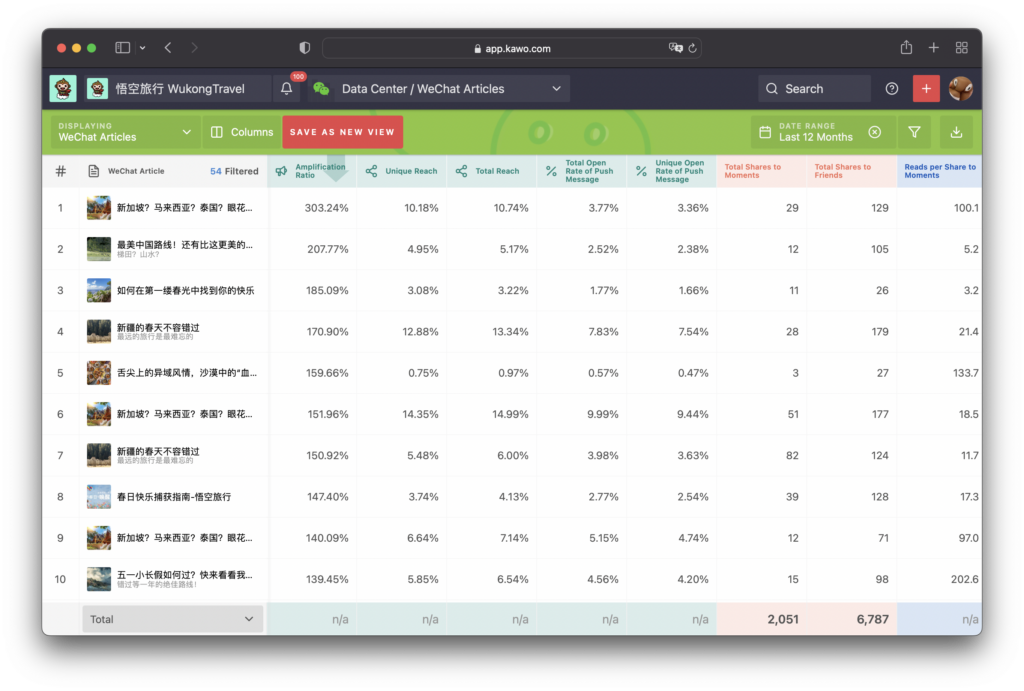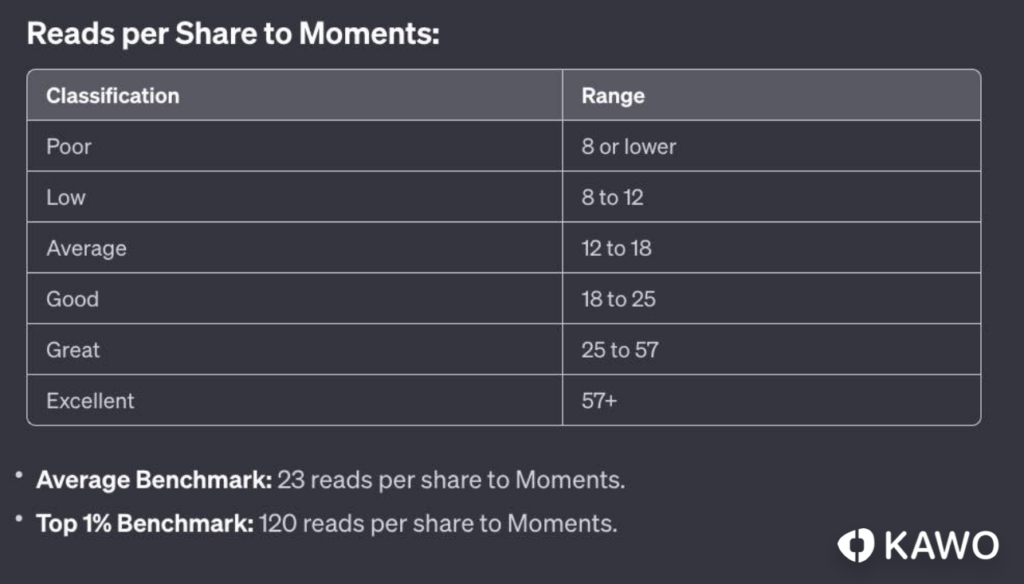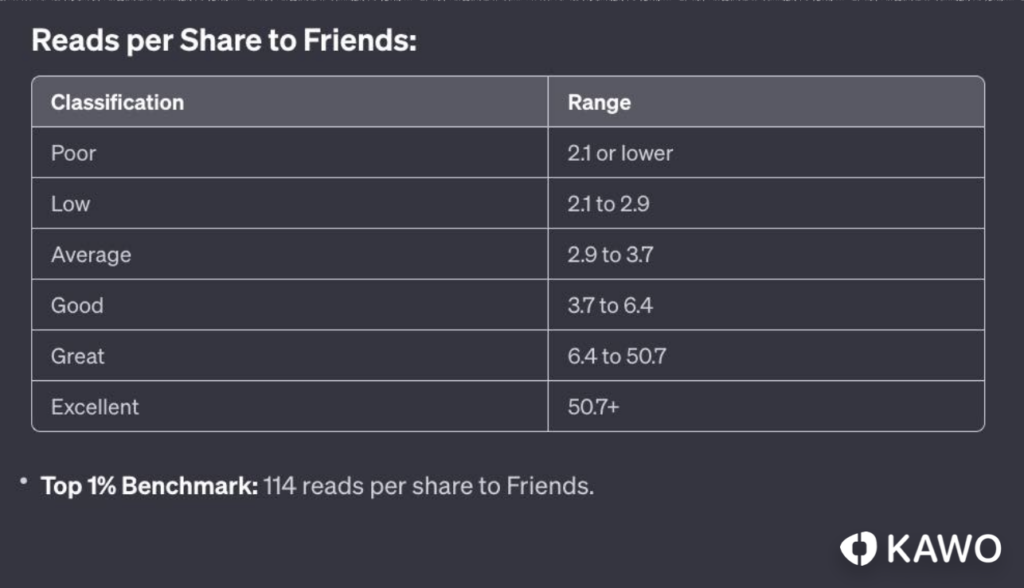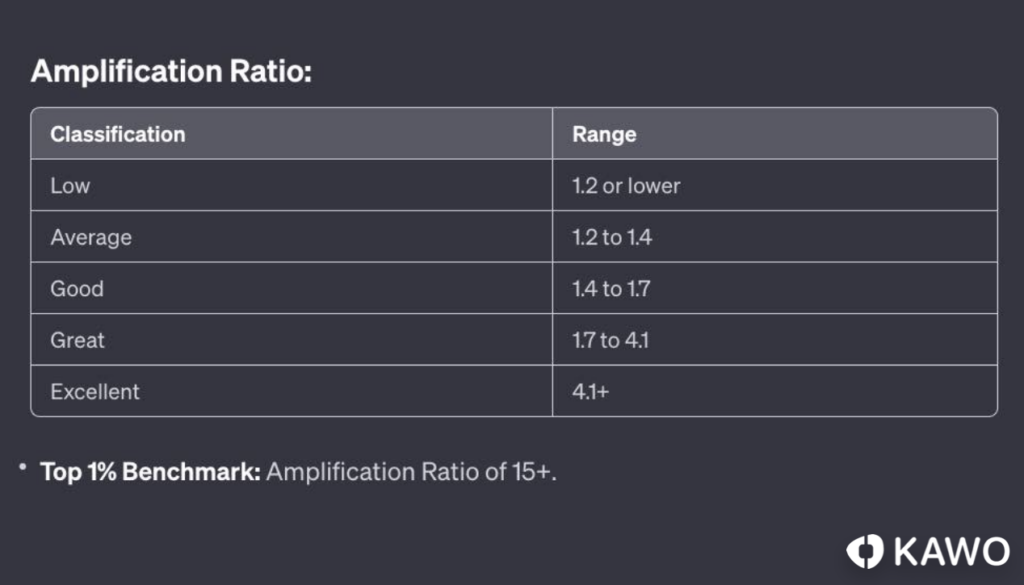
Ever wished for content insights that match your brand’s vibe in just a few minutes? ChatGPT might just be your magic wand for Instagram, Twitter, and LinkedIn content 🪄
While ChatGPT works wonders in many realms, it faces a Great Wall in China. Unfortunately, it can’t tap into popular social networks like WeChat. So, if your brand shines in China using a WeChat Official Account, brace yourself for some extra legwork: You’ll need to manually select and tidy up data from the WeChat backend before feeding it into ChatGPT.
If the thought of working smart, not hard, resonates with you, this article is your secret weapon.😏
Fear not! KAWO steps in to handle the manual labor before ChatGPT sprinkles its magic. By pinpointing “the best” content tailored to your liking, KAWO empowers brand users to curate a list of top-notch content from the Data Center. The process involves key metrics like Open Rate, along with KAWO’s calculated metrics not listed in the WeChat backend:
- Reads per share to Moments
- Reads per share to Friends
- Amplification Ratio
In this article, we’re not just giving you these three calculated metrics, we are also dishing out the content insights as ChatGPT would have done for you using this method. Ready for the ride? Let’s dive in!
Calculated Metrics
Marketers in China often zoom in on “Open Ratio” as a vital gauge for WeChat Official account performance. Another common goal? Growing that follower base.
While open rate offers insights into your existing followers, it doesn’t necessarily align with gaining new ones. The magic happens when your audience shares your content, drawing in fresh followers. WeChat users wield the power to share content on their Moments or send it directly to friends via chat.
Here, KAWO steps in to track how frequently your content gets shared, estimating the average number of new followers gained through these shares. Plus, we’ve got a secret weapon: the “Amplification Ratio”. This ratio reveals how your content spreads beyond your current followers, potentially reaching new audiences.
According to KAWO database, on average, 65% of readers read your content from Push Messages, around 6% through shared to moments and 8% via shared by a friend in chat.
A quick glance might make you think “Sharing to Friends” is more effective than “Sharing to Moments”. But, it’s more likely for people to share content with friends than on their WeChat Moments. Our data shows roughly 77% of sharing happens with Friends and only about 23% with Moments. Let’s dive into the metrics:
Reads per share to Moments
This metric is calculated by dividing the total reads from shares to WeChat Moments by the number of times the article is shared to the Moments.
On average, expect 23 reads for every share to Moments: Looking at our benchmarks, we see that on average you will gain 23 reads for every share to Moments. This average can be skewed by exceptionally well-performing content, so in order to really understand how good your Reads per share to Moments is, we can look at percentiles classify it as:

Reads per share to Friends
This metric is calculated by dividing the total reads from shares to WeChat friends by the number of times the article is shared to the friends. This includes sharing to a single friend and sharing to groups.
Top-performing content can see over 114 reads per share to Friends: Sharing to a single friend will likely only result in a single read by that friend. This is why on average these numbers are much lower than Reads per share to Moments. We see that top performing content is shared to (large) groups and therefore receiving a lot of reads per share. Let’s look at percentiles classify it as:

Amplification Ratio
This ratio is calculated by dividing the number of unique reads by the number of unique reads from push messages.
A high Amplification Ratio indicates viral potential. If a higher percentage of your readers are reading your content without following your account, your amplification score will be higher. Conversely, if content is mostly read by your current follower base, the amplification score will be lower.
How will you know how good your Amplification Ratio is? Aside from comparing the metric between your articles, we’ll also provide benchmarks from all content across KAWO.

It’s undeniable that only looking at an average number does not provide any insights. The top performing content just performs so much better than the rest, it would be skewing the average. These benchmarks can help to provide more context and a guideline as to how well your content performs.
How to write the title to make a WeChat article more shareable?
We exported the top 5% of the content from the KAWO database and analyzed the top 200 articles. We found several commonalities and strategies for the title creation that seem to make articles more shareable.
- Curiosity and Intrigue: Titles like “A Prophecy from a Century Ago about 2023” or “Where is the Magical Terrain?” spark curiosity and make readers want to know more.
- Seasonal and Timely Topics: Articles related to specific seasons, holidays, or events, such as “Autumn Equinox Treats” or “Spring Festival Never Ends, Bring Home Welfare Goods”, are likely to be shared more during those times.
- Personal Connection: Titles that use words like “you”, specifically for females make the reader feel personally involved, such as “You, ____”.
- Lists and Guides: Titles offering lists or guides, such as “Easy Home Party, Here’s the Essential Item List” attract readers looking for practical advice.
- Invitations and Announcements: Titles that invite readers to participate in an event or reveal exciting news, like “Live Preview | May 30th, How to Use Scene Tags for Cost Reduction and Scalable Customer Growth?”, encourage sharing.
- Cultural References: Articles that incorporate cultural references, like “Tuscany! Infinite Renaissance”, may appeal to readers interested in art and culture.
- Positive Emotions: Titles that evoke positive emotions, such as “Sweet Thoughts, Just a Touch Away”, tend to be shared more because people enjoy sharing positivity.
- Mystery and Suspense: Titles that hint at a mystery or suspense, like “More Hobbies, All Kept Here”, encourage readers to click and find out.
- Informative and Educational: Titles that promise valuable information or knowledge, such as “How to Dress for Sports? A Comprehensive Review of Fashion Sports Brands”, are more likely to be shared by those seeking information.
- Personal Growth and Self-Improvement: Titles like “Dreamweaver Dream Tour Event Is Here!” attract individuals interested in personal development and self-improvement.
- Human Interest and Stories: Articles with a human interest angle, such as “the ‘Architect’ of Hospitals, Florence Nightingale”, often get shared for their inspirational or touching stories.
- Relevance to Current Affairs: Articles related to current events or trends, like “Battery Production: Monitoring Roller Pressure with IO-Link Fluid Sensors”, are more shareable during those times.
We mixed the content of dozens of brands to show you how content insights will look. Keep in mind, your brand’s content insights will be even more tailored! The point to make is that brands can save time on receiving insights using KAWO’s Data Center to create a list of top content by having the platform calculate it based on calculated metrics.







